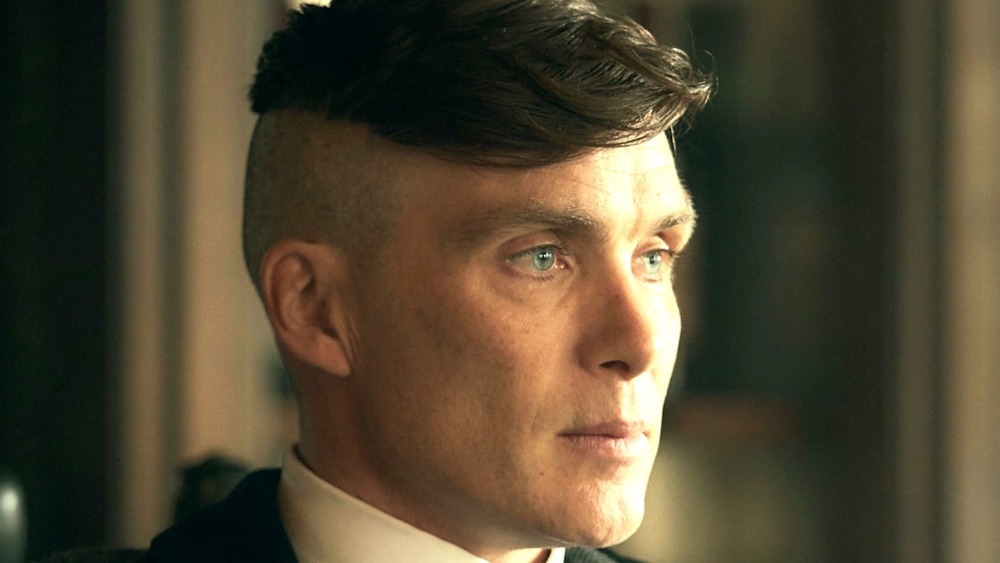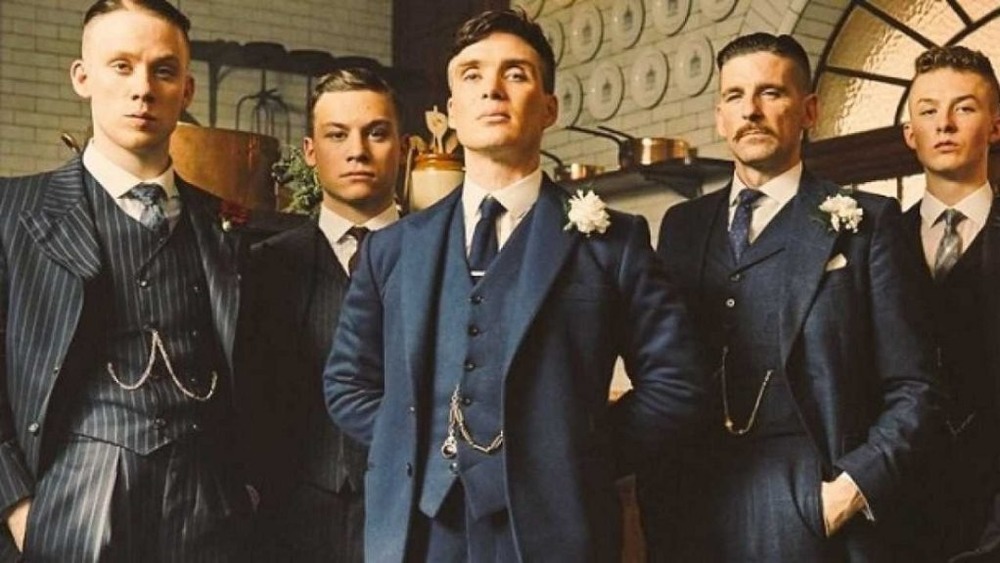The Truth About The Haircuts On Peaky Blinders
Since debuting on the BBC in 2013, and landing Stateside via Netflix a year later, the gritty historical crime saga known as Peaky Blinders has become the talk of the television world with critics and audiences alike heaping praise on the series. If you've yet to join the Peaky Blinders party, the show opens in 1920s Birmingham, and follows a fierce band of Irish gangsters out to make their own fortunes in the post-World War I landscape by any means necessary.
That fearsome group is fronted by Tommy Shelby (Cillian Murphy), whose fierce intelligence, cunning instincts, and brutal methods have helped make the Peaky Blinders one of the most feared and revered crews in Birmingham. Much of the praise surrounding Peaky Blinders is understandably focused on the series' razor-sharp scripting, crackling performances, and often shocking flourishes of violence, but the show has also become quite renowned for its period-specific fashion sense too. While the posh suits and glorious gowns the Peaky Blinders' cast dons throughout continues to garner the lion's share of attention, it seems the close-cropped, mop-top haircuts most of the Peaky boys sport have also generated serious conversation among fans — many of whom wonder if those cuts are as period-specific as the garb.
As it happens, Express U.K. recently put that very question to one of its writers, and after undertaking some extensive research, said writer discovered the closely cropped sides with longer locks on the top (called an "undercut" or "texturised crop") was indeed a popular haircut for working class blokes of the era. "The Peaky Blinders haircut is historically accurate and has been a popular look since the 20th century, particularly amongst young working-class men," he said.
The Peaky Blinders cut is making a comeback
The Express U.K. piece further details that the "undercut" originated in interwar-era Glasgow, and was largely favored by petty criminals. Citing an academic paper from historian Andrew Davies entitled Youth Gangs, Masculinity and Violence in Late Victorian Manchester and Salford, the story further confirms that the style soon caught on in England: "Members of street gangs in England also favoured the undercut hairstyle because long hair put them at a disadvantage during a street fight." As such, the "undercut" makes a lot of sense for Shelby and his crew as they aren't usually ones to walk away from a fight.
Turns out, Peaky Blinders has also made the singular hairstyle quite popular with lads of the modern era. At least Cillian Murphy claims that to be the case, with the actor telling The Shortlist in 2017 that, "People like the undercut thing; people go to the barber and ask for a 'Peaky cut'. It's crazy that people like it." He then commented on his on general distaste for the now-iconic hair style, "It's not grown on me in four years now. I normally keep my hair long."
Boasting his own knowledge of the "undercut", the feisty Murphy went on to roast some of the trend-setters who've appropriated the Peaky Blinders look for not knowing the alternate history behind it, which hilariously involves lice prevention. "But do they realise, the people in turtlenecks in Hackney with this haircut, do they realise it was styled this way to prevent lice? Tell 'em they've got the lice cut, see what they say then."
Whatever the case, it's clear the "undercut" is here to stay. So too is the wild popularity of Peaky Blinders. The long-awaited sixth season is currently in production.

